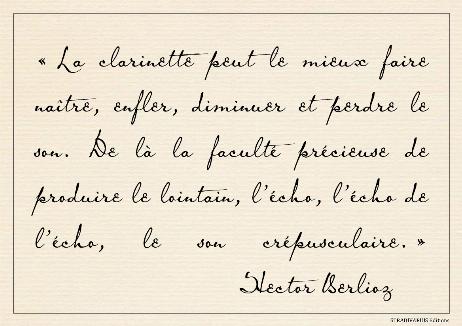- Voice
- Keyboard
- String
- Woodwind
- Brass
- Library

Grand Traité d'Instrumentation et d'Orchestration Modernes
1844
$ 0.00
The clarinet can best create, swell, diminish and lose sound. Hence the precious ability to produce the distant, the echo, the echo of the echo, the twilight sound. $ 0.00
PDF - 1 page
Le Traité d'instrumentation et d'orchestration is a work published by Hector Berlioz in 1844, dealing with musical composition from the point of view of instruments and the orchestra.
Illustrated with numerous quotations from operas and symphonic works by the great classical masters from Mozart onwards, the Treatise deals with the technique of the different families of musical instruments, their tessituras, modes of transposition, dynamics and agility, as well as the particular character of their timbres and the possibilities offered by their combination. Berlioz then gives an overview of the possibilities for writing and organising the orchestra as it existed in the nineteenth century.
Berlioz was a French Romantic composer, conductor, music critic. His output includes orchestral works such as the "Symphonie fantastique" and "Harold in Italy", choral pieces including the "Requiem" and "L'Enfance du Christ", his three operas "Benvenuto Cellini", "Les Troyens" and "Béatrice et Bénédict", and works of hybrid genres such as the dramatic symphony "Roméo et Juliette" and the dramatic legend "La Damnation de Faust".
Recognized during his lifetime as a master of orchestration, Berlioz published his "Traité d'instrumentation et d'orchestration" in 1844, which inspired many composers and remains a model for works on the same subject in the 20th century, such as those by Rimsky-Korsakov and Charles Koechlin.
Added to your basket

Removed from your basket

Added to your favorites

Removed from your favorites

You must be registered to use this function

You reached the download limit for free products (5 per day)
